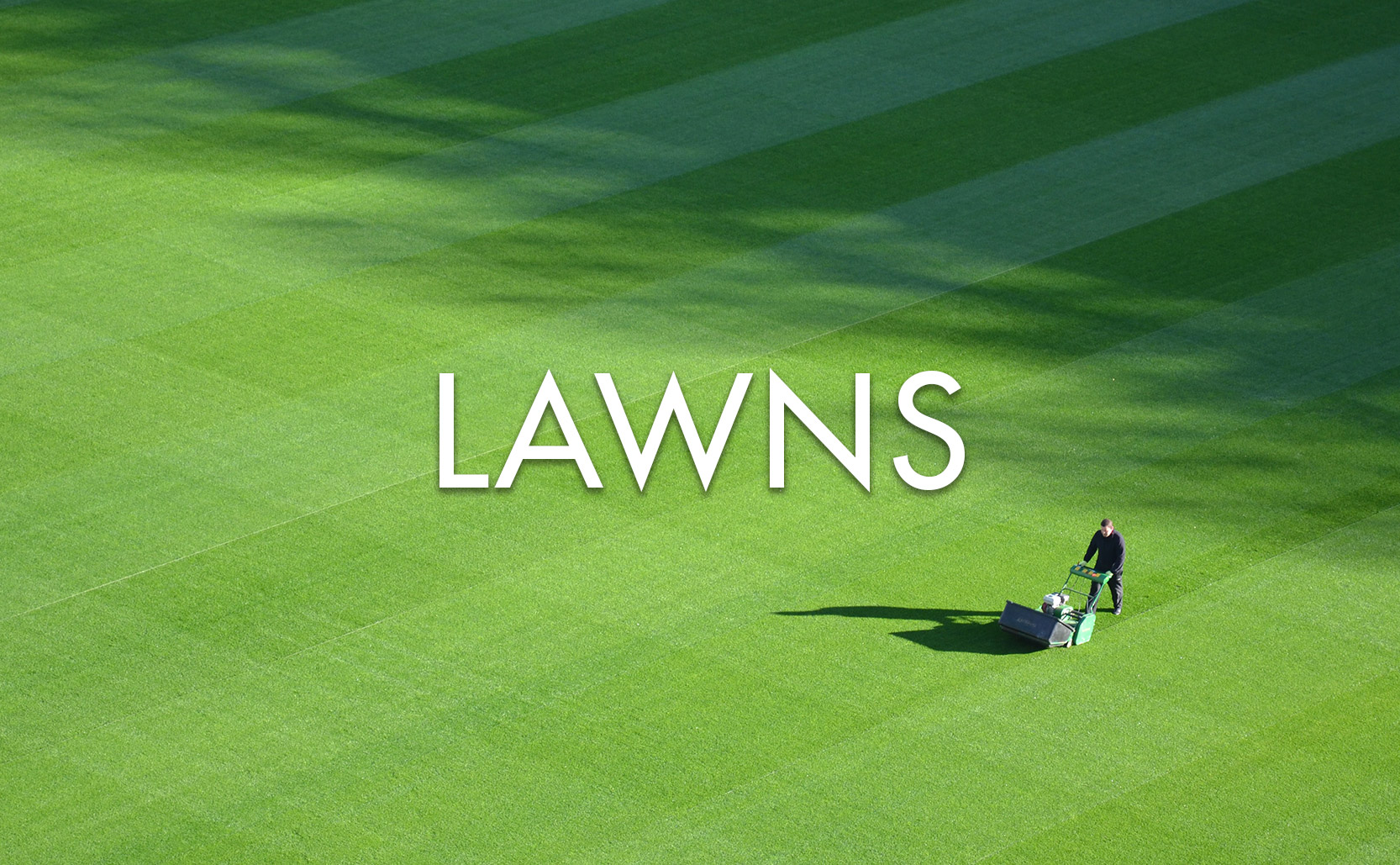Lawns
Beautiful, orderly, ecological problems.
It used to be that, if you owned land, you used it to grow plants for some kind of profit (food, timber, fabric, etc.). Decorative manicured grounds have no monetary value. To keep a grassy lawn was a sign of wealth – it was a status symbol that you had so much money you could use some of your land for pure ornamentation. Beyond being a “waste of space”, you also had to pay for people to maintain the lawn, making it even more expensive.
Our modern idea of a meticulously manicured grassy lawn has its roots in 18th century European aristocracy. While earlier palaces featured intensely manicured gardens with topiaries and geometric lines (such as the Palace of Versailles), 18th century English garden design drew inspiration from the pastoral landscapes of Italian paintings. This new style featured wide open spaces that, while manicured, looked more natural. For example, some estates used ha-ha walls as barriers to keep grazing animals away from the house while offering the illusion of an uninterrupted natural view of the grounds.
As for the upkeep, grazing animals were sometimes used to maintain the lawn in the distance (and were a visual addition to the “natural” scene) but the areas closest to the house were tended to by men using hand tools. Even after the invention of the lawn mower in 1830, which helped increase the number of grassy lawns, these trimmed green fields were found primarily around the homes of the wealthy.
Imported Grass
17th century colonists arriving in North America were generally preoccupied with trying to stay alive and didn’t have the time for decorative lawns. They were also missing the grass itself. The East Coast lacked the types of grasses necessary to turn into lawns. What’s worse is that these were the kinds of grasses that best served as food for the colonists’ grazing animals. As such the animals over grazed the native available plants, eventually turning in desperation to eating poisonous plants (to their detriment).
To solve this problem colonists began to import grass from Europe for their cows, sheep, etc. This is how many of the grasses that are so common in America got here. For example Kentucky bluegrass, one of the most popular grasses in America, is a non-native/invasive species and was imported from Europe.
Suburban America
As settlers spread around North America so too did grass. Throughout the 19th century as people became more established, grassy lawns slowly became a feature of homes and parks. After the Civil War the more prosperous northern states adopted lawns sooner than southern states. Public parks and cemeteries increased the popularity of grassy lawns. Landscape architect Frederick Law Olmsted designed one of the earliest suburbs in 1868 with his plans for Riverside, Illinois. He set the homes back 30ft from the street and placed grassy lawns out front. What really democratized lawns however was the housing boom in the mid 20th-century.
With the 1944 G.I. Bill millions of veterans were able to receive home loans which helped them buy homes and move to the suburbs. Abe Levitt, who created Levittowns, said that “A fine lawn makes a frame for a dwelling …”. Millions of homes were suddenly being created with millions of lawns. As so many families were becoming home owners lawns became less about economic status and more about cultural conformity. A well-maintained lawn was the sign of a good neighbor, and an unkempt lawn was subversive. Lawn care became big business and articles about lawn care surged in post-war America. With color TV more people could watch professional sports (especially golf) and see what was possible for their own lawns.
The Wasteland
Today there is an estimated 40 million acres of grass in America. Grass is America’s greatest crop all while being (generally) inedible – lawns serve almost no functional purpose other than looking nice. Cutting grass regularly encourages it to spread out, edging out other plants and reducing biodiversity. Interestingly more affluent homes which can afford the time & money needed for a more manicured lawn actually have lower biodiversity than lower-income homes. The nicest looking lawns are, paradoxically, the worst for the environment.
As for carbon emissions grass is a carbon sink (which is a good thing), meaning it captures carbon emissions and stores it in its roots. Unfortunately the act of mowing the lawn contributes far more carbon dioxide than is captured. Gas powered lawn equipment produce more air pollution than cars over comparable periods of time (For example: the air pollution of 1 hour of mowing equals around 100 miles of driving). Lawn mowers account for around 5% of America’s air pollution. Having and maintaining a lawn ultimately produces more dangerous carbon dioxide than it captures. Further, lawn equipment in America uses around 800 million gallons of gasoline annually of which about 17 million gallons are spilled and never even used.
Homeowners use 10 times the amount of pesticides and fertilizers per acre than farmers, and many of these chemicals find their way into the water supply. Watering these lawns uses 30-60% of urban fresh water – all for a crop that isn’t eaten and just sits there.
Go Native
An alternative to lawns are trees or other native plants that require less maintenance (less gas powered machines) and improve biodiversity. Native plants are better for butterflies, bees, and other helpful insects. This in turn is better for birds and other animals. Planting native plants, not using pesticides, reducing the size of your grass lawn, etc. creates a healthier and more bird friendly yard. Break free of the conformist thinking that you must have a green carpet around your house.


